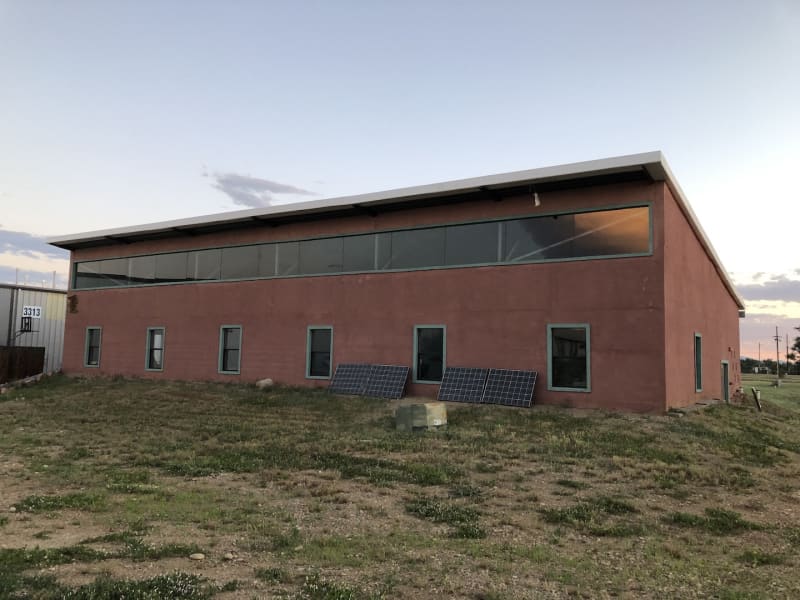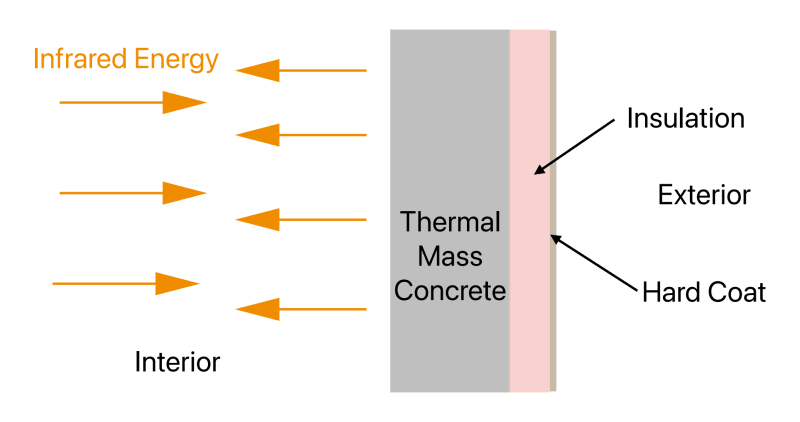We have proven that natural comfort control can maintain reasonable interior temperatures without the use of any mechanical climate control devices or sophisticated building technologies. Our first building, an aircraft hangar in Boulder Colorado, maintains 15°C (60°F), plus or minus 11°C (20°F) through the proper application of thermal mass, insulation and solar gain. We are predicting our next building will maintain 21°C (70°F), plus or minus 6°C (10°F) with the addition of a Trombe wall. These structures also have superior comfort since the majority of the heat transfer is via radiation and not convection (heated air).
Although the general concepts of thermal mass and radiant heat transfer are well understood in the scientific community, these technologies are rarely applied in the design and construction of actual commercial buildings. In this particular instance, multiple scientific principles were combined to produce the desired outcome.
The paramount principle is energy storage. Concrete stores about 2,500 times more energy per unit volume than air. For the 4,000 square foot aircraft hangar with six inch concrete walls, the air volume is 9 times that of the concrete walls and floor, yet the concrete can hold almost 400 megaJoules per degree K. This is 278 times the energy capacity of the interior air volume. This allows the air to be repeatedly exchanged to the exterior, such as during the opening of hangar doors, without a significant loss of the building’s heat energy. This principle works for warmth in the winter as wells as coolness in the summer.
The second significant principle is that the energy contained in the thermal mass of the building only heats people and objects, and very little of the air. Nitrogen and oxygen make up 99 percent of the air and are transparent to the infrared heat energy. All of the solid objects inside the building are constantly radiating and absorbing energy. Air that is in contact with these objects is warmed slowly through conduction, and thus the temperature of the air will eventually match the temperature of the walls. Thick, rigid foam insulation on the exterior of the building significantly limits the loss of energy to the outside.
Comfort is perceived more from radiant heat than from convective heat transfer. A person standing in sunlight on a cold day feels warmer than standing in shade on a warmer day. Buildings with forced air heating require a higher air temperature when it’s cold outside because the walls are cold and absorb the heat radiating from the people, making the people feel cold.
Trombe walls will be included in future designs to raise the average temperature from 15°C to 21°C for more comfort. Trombe walls are the most direct ways to heat the interior objects, people and other walls. The heat energy gathered from the sunlight on winter days slowly travels through the Trombe wall to radiate into the building later that evening or night.
Like this entry?
-
About the Entrant
- Name:Carl Lawrence
- Type of entry:individual
- Software used for this entry:AutoDesk
- Patent status:none








